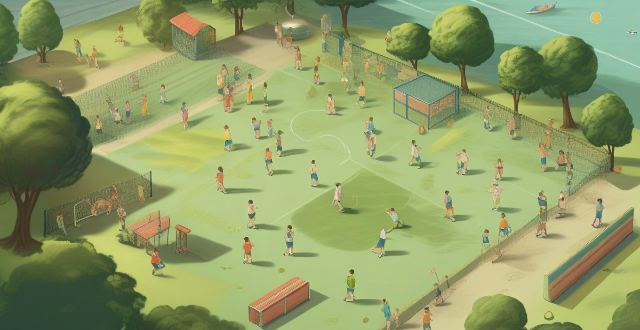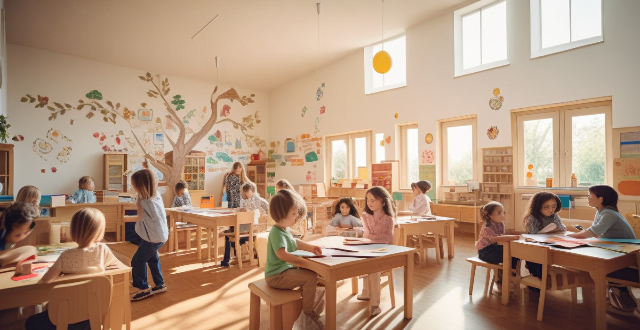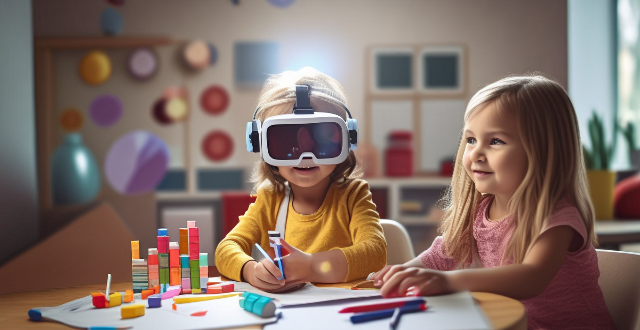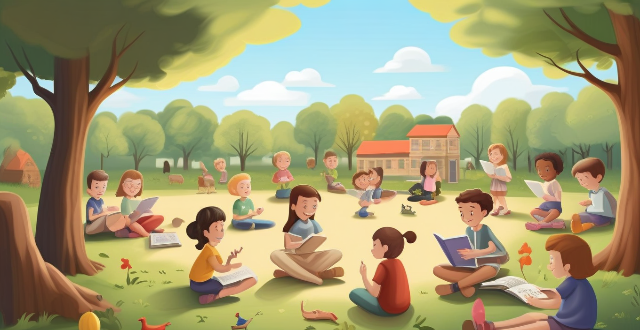Essential Child

How to choose the right extracurricular activity for your child ?
Choosing the right extracurricular activity for your child is crucial for their development and well-being. Consider your child's interests, skills, and abilities, evaluate the time commitment and logistics, seek recommendations and read reviews, and involve your child in the decision-making process to help them choose an activity they will enjoy and benefit from.

How can I teach my child better concentration habits ?
Concentration is an essential skill for children to develop as it helps them focus on tasks, learn new things, and achieve their goals. Teaching your child better concentration habits can be challenging, but with patience and consistency, you can help them improve their ability to pay attention and stay focused. Here are some tips to teach your child better concentration habits: 1\. Set Clear Expectations: Establish clear expectations for your child's behavior and concentration levels. Make sure they understand what is expected of them and why it is important. 2\. Create a Distraction-Free Environment: Minimize distractions in your child's environment to help them concentrate better. Turn off the TV, put away toys or electronic devices, and ensure that there are no loud noises or interruptions during study or task time. 3\. Break Tasks into Smaller Chunks: Breaking down tasks into smaller, more manageable chunks can help your child stay focused and avoid feeling overwhelmed. 4\. Use Visual Cues: Visual cues such as checklists or charts can help your child stay organized and focused on their tasks. 5\. Encourage Short Breaks: Encourage your child to take short breaks between tasks to recharge their mental batteries. A five-minute break every hour or so can help them maintain focus and avoid burnout. 6\. Practice Mindfulness Techniques: Mindfulness techniques such as deep breathing exercises or meditation can help your child develop better concentration habits. 7\. Praise Effort and Progress: Praising your child's effort and progress can motivate them to continue working towards better concentration habits. Acknowledge their accomplishments and encourage them to keep pushing themselves to improve.

What are the key elements of child safety education ?
Child safety education is crucial for the well-being and protection of children. It involves teaching children about potential dangers and how to avoid them. This educational process helps children develop a sense of awareness, responsibility, and self-protection. In this article, we will discuss the key elements of child safety education. The main elements of child safety education include personal safety, stranger danger, internet safety, home safety, school safety, and road safety. Personal safety includes teaching children about personal boundaries, private parts, and inappropriate behaviors. Stranger danger education helps children identify potential threats from unknown individuals. Internet safety education is essential in today's digital age. Home safety education focuses on creating a safe environment for children at home. School safety education aims to create a safe learning environment for children. Road safety education is crucial for children who walk or cycle to school or play outside. By focusing on these key elements of child safety education, we can help children develop the skills and knowledge they need to stay safe and protect themselves from potential dangers. Child safety education is an ongoing process that requires the involvement of parents, schools, communities, and governments.

At what age should children start attending preschool ?
The appropriate age to start preschool varies depending on the individual child and their readiness for the experience. Most experts agree that three to four years old is an ideal age range for starting preschool. However, it's essential to consider each child's unique circumstances and needs before making a decision. Early education plays a crucial role in shaping a child's cognitive, social, and emotional development. By enrolling children in preschool, parents can help them develop essential skills such as socialization, language development, cognitive growth, and emotional intelligence. Before deciding when to start your child in preschool, consider factors such as the child's maturity level, developmental milestones, family situation, financial considerations, and quality of program.

What is the relationship between physical literacy and child development ?
Physical literacy is crucial for child development, enhancing cognitive, social, emotional, and physical dimensions of learning. It improves memory, attention, problem-solving skills, communication, cooperation, empathy, self-esteem, resilience, muscle strength, cardiovascular health, and reduces the risk of chronic diseases. Incorporating regular physical activity into children's daily routines promotes their overall growth and well-being.

How do you identify a child who may have special education needs ?
Identifying a child with special education needs is crucial for providing them with the right support and interventions. Signs include delayed developmental milestones, difficulty in school, unusual behaviors or habits, and health concerns. If you suspect a child may have special education needs, consult with professionals to determine the appropriate course of action.

What are some creative ways to spend quality time with your child without using technology ?
Spending quality time with your child is crucial for their development and well-being. Here are some creative ways to do so without relying on technology: 1. Outdoor Adventures: Take nature walks or plan camping trips to explore the outdoors together. 2. Creative Activities: Encourage art projects and music making to foster creativity in your child. 3. Educational Games: Play board games that require critical thinking and work on puzzles together to improve cognitive abilities. 4. Physical Activities: Engage in sports or introduce yoga and meditation practices for physical and mental well-being. 5. Reading Together: Have storytime sessions and visit libraries regularly to foster a love for reading and learning.

Can I get sports insurance for my child who plays school sports ?
Sports insurance can provide coverage for athletes participating in organized sports, including school sports. Consider factors like age limit, type of sports, level of competition, and coverage details when selecting a policy. Cost, duration, additional benefits, and the application process are also important considerations. While sports insurance offers peace of mind and financial protection, it can be expensive and may have limitations. Evaluate your child's needs and consult with an insurance professional to make an informed decision.

How do family courts handle cases related to domestic violence and child custody ?
Family courts play a crucial role in handling cases related to domestic violence and child custody, prioritizing safety, investigating allegations, considering the best interests of the child, making custody decisions, and providing ongoing support and monitoring.

What measures should be taken to protect the rights of child laborers who work in industries affected by climate change ?
Protecting the rights of child laborers in industries affected by climate change requires a multifaceted approach that involves legislative actions, education and awareness, economic support, access to education, health and safety measures, and international cooperation. Ensuring that existing labor laws are enforced and amending legal frameworks to include specific provisions for protecting child laborers is crucial. Educating communities about the dangers of child labor and raising awareness among parents and communities about the importance of education can help reduce the reliance on child labor. Providing financial aid to families and creating alternative income sources can also reduce their dependence on child labor income. Improving access to education by building schools in rural areas and offering flexible schooling options can help accommodate children who need to work. Providing healthcare services and implementing safety measures in workplaces where child laborers are employed is essential. Collaborating with international organizations and sharing best practices can help address the issue of child labor globally. By implementing these measures, we can ensure that child laborers are protected and empowered to build a better future for themselves and their communities.

How do individual versus team sports differ in their impact on child development ?
Individual sports foster self-reliance and technical mastery, while team sports emphasize social skills and emotional intelligence. Both have unique benefits for child development, and the choice should consider the child's personality and desired skill development. A combination of both might provide the most well-rounded experience.

How do you handle discipline in a homeschooling environment ?
Handling discipline in a homeschooling environment is crucial for ensuring an efficient and effective learning process. Here are some tips: 1. Set clear expectations at the beginning of each school year, outlining rules and consequences for breaking them. 2. Consistency is key when enforcing rules and consequences to help your child understand that their actions have consequences. 3. Use positive reinforcement to encourage good behavior and academic success, such as praise or small rewards for achieving specific goals. 4. Be a role model by leading with patience, understanding, and respect when addressing your child's misbehavior. 5. Encourage open communication with your child about the rules and consequences in place, being open to feedback and suggestions from them.

How do you handle disagreements with your child over homeschooling ?
Handling disagreements with your child over homeschooling requires listening actively, validating their feelings, discussing issues collaboratively, seeking professional advice when needed, and maintaining open communication.

What are some essential makeup brushes for beginners ?
Starting a makeup collection can be overwhelming, especially when it comes to choosing the right brushes. Here are some essential makeup brushes that every beginner should have: 1. Foundation Brush: Used for applying liquid or cream foundations evenly on your face. 2. Powder Brush: Perfect for applying loose or pressed powder all over your face. 3. Blush Brush: Designed for applying blush or bronzer to the apples of your cheeks. 4. Eyeshadow Brush: Crucial for applying eyeshadow to your eyelids. 5. Eyeliner Brush: Ideal for creating sharp lines along your upper lash line. 6. Mascara Brush: Helps achieve clump-free, separated lashes (optional). 7. Lip Brush: Essential for applying lipstick or lip gloss precisely. These seven makeup brushes are essential for beginners who want to create a flawless base, enhance their features, and experiment with different looks. Remember to clean your brushes regularly to maintain their quality and longevity.

How can I teach my child to better understand what they read ?
Teaching your child to better understand what they read involves encouraging active reading, using visual aids, discussing the text with them, and practicing regularly.

What are the essential nutrients for women's health ?
Essential Nutrients for Women's Health Women's health requires attention to various aspects of nutrition, including essential nutrients such as calcium, iron, folic acid, vitamin D, omega-3 fatty acids, vitamin B12, fiber, vitamin C, zinc, magnesium, iodine, vitamin E, vitamin A, copper, choline, selenium, and potassium. These nutrients are crucial for maintaining good health, building and maintaining strong bones and teeth, making hemoglobin, preventing neural tube defects in developing babies, supporting bone and immune system health, supporting heart health and brain function, aiding digestion, helping form collagen in skin, important for immune system function, involved in more than 300 bodily processes, essential for thyroid function, acts as an antioxidant in the body, important for vision, helps the body form red blood cells, important for brain development and health, and acts as an antioxidant in the body. A balanced diet rich in these essential nutrients is crucial for women's health, and it's important to consult with a healthcare provider or a registered dietitian to ensure individual nutritional needs are met.

What are the benefits of participating in parent-child activities together ?
Participating in parent-child activities together offers numerous benefits, including improved communication, stronger emotional connections, physical health benefits, cognitive development, social skills development, and the creation of lifelong memories. By engaging in these activities, families can strengthen their relationships, improve communication, and create lasting memories that will be cherished for years to come.

What are some fast strategies for organizing my child's toys and books ?
Fast Strategies for Organizing Your Child's Toys and Books: 1. Create a storage system using labeled bins, shelves, and hanging organizers. 2. Implement a cleaning routine with daily tidy-up time and weekly deep cleans. 3. Rotate toys and books seasonally or based on age appropriateness. 4. Involve your child in the process by making it fun and allowing choices. 5. Utilize multipurpose furniture with built-in storage for added organization.

How can technology be used to enhance child safety education ?
Technology can significantly enhance child safety education through various strategies such as interactive learning applications, virtual reality experiences, online safety courses, wearable devices, and social media engagement. These tools not only make learning fun and engaging but also provide practical, real-world simulations that help children develop essential safety skills. By utilizing these modern methods, we can equip the younger generation with the knowledge and confidence needed to stay safe in a rapidly changing world.

How can I make sure my child is getting a healthy, balanced diet ?
Ensuring a healthy, balanced diet for your child involves offering a variety of foods, limiting junk food and sugary beverages, planning meals, practicing portion control, and being a role model.

How can I improve communication with my child through interactive activities ?
The text offers guidance on how to enhance communication between parents and children through engaging in interactive activities. It outlines the benefits of such activities, including boosting emotional connection, promoting learning, enhancing social skills, and encouraging open communication. Specific strategies are suggested for choosing age-appropriate activities, involving children in activity selection, setting aside dedicated time, fostering a positive environment, being fully present, encouraging equal participation, reflecting on experiences together, and integrating learning opportunities. Examples of interactive activities include board games, art projects, outdoor adventures, cooking, building blocks or puzzles, reading stories, role-playing games, and science experiments. To maintain engagement, tips such as varying types of activities, adapting to mood, celebrating successes, and learning from mistakes are recommended. The conclusion emphasizes that interactive activities can significantly improve communication by creating a nurturing environment that fosters open dialogue and mutual respect.

How can parents incorporate physical activity into their homeschooling routine ?
Incorporating physical activity into a homeschooling routine is crucial for a child's development, as it enhances cognitive abilities, improves mood, and fosters social skills. Parents can achieve this by scheduling regular exercise time, integrating movement into learning, involving outdoor activities, making physical activity fun, setting an example, and using technology. Starting the day with exercise, taking breaks for physical activity, teaching concepts through movement, combining art with movement, planning nature walks or hikes, assigning gardening tasks or outdoor chores, playing games, hosting dance parties, participating in physical activities alongside the child, enrolling the child in online fitness classes or following workout videos, and allowing the child to play active video games are some effective ways to incorporate physical activity into the homeschooling routine.

Can you suggest any essential items I should always pack for a vacation ?
When planning a vacation, it's important to pack the essential items that will ensure your comfort and safety throughout the trip. These include travel documents, clothing, toiletries, electronics and accessories, and miscellaneous items such as a travel pillow, reusable water bottle, snacks, reading material, cash and credit cards, and a travel journal. By packing these essentials in your carry-on luggage, you can ensure a comfortable and enjoyable vacation experience.

What are the essential items to include in a home first aid kit ?
A well-stocked first aid kit is an essential component of any home. It should contain items that can help you deal with minor injuries and illnesses that may occur in your household. Here are some of the essential items that you should include in your home first aid kit: 1. Adhesive Bandages 2. Sterile Gauze Pads and Rolls 3. Medical Tape 4. Antiseptic Wipes or Solution 5. Tweezers 6. Scissors 7. Thermometer 8. Pain Relievers 9. Antihistamines 10. Cold and Hot Packs 11. Latex Gloves 12. Safety Pins

How can parents support their child's learning in preschool ?
Parents can support their child's preschool learning by reading with them, encouraging curiosity and exploration, fostering socialization skills, and establishing routines and structure. Reading enhances language development and cognitive abilities, while also fostering emotional bonding. Encouraging curiosity through activities like nature walks and science experiments helps in cognitive and emotional development. Fostering socialization skills is crucial for your child's interaction with peers and adults. Establishing routines and structure promotes self-discipline, reduces anxiety, and enhances learning.

What are some tips for making science experiments at home for educational purposes ?
Science experiments are a great way to engage children in learning about the natural world around them. Here are some tips for conducting science experiments at home for educational purposes: ## 1\. Choose Age-Appropriate Experiments Select experiments that are suitable for your child's age and ability level. Younger children may enjoy simple experiments involving colors, shapes, and basic physical properties, while older children can tackle more complex concepts such as chemical reactions or electricity. ## 2\. Gather Materials in Advance Make sure you have all the necessary materials before starting the experiment. This will help avoid interruptions and frustration during the process. Create a list of required items and gather them ahead of time. ## 3\. Follow Safety Guidelines Safety should always be a top priority when conducting science experiments at home. Ensure that you and your child follow proper safety guidelines, such as wearing protective gear (e.g., goggles, gloves) and working in a well-ventilated area. ## 4\. Involve Your Child in the Process Encourage your child to participate in every step of the experiment, from planning to execution. This will not only make the experience more enjoyable but also help them develop critical thinking skills and problem-solving abilities. ## 5\. Observe and Record Results Observing and recording results is an essential part of any scientific experiment. Encourage your child to take notes throughout the process, documenting their observations and findings. This will help them understand the importance of data collection and analysis in science. ## 6\. Discuss Results and Implications After completing the experiment, discuss the results with your child. Ask questions about what they learned, how the experiment could be improved, and what implications their findings might have on real-world applications. This will help foster their curiosity and interest in science. ## 7\. Clean Up Properly Teach your child the importance of cleaning up after themselves by ensuring that all materials are properly disposed of and surfaces are wiped down. This will help maintain a safe and organized environment for future experiments.

What role do parents play in ensuring their child's special education needs are met at school ?
Parents play a crucial role in ensuring their child's special education needs are met at school. They can do this by understanding their child's needs, collaborating with school personnel, and providing support at home. Advocating for your child involves working with professionals to assess their needs, keeping detailed records, and regularly communicating with teachers and other professionals. Collaborating with school personnel means attending IEP meetings, maintaining open lines of communication, and viewing yourself as a partner with the school. Providing support at home involves ensuring consistency between home and school environments, helping with homework, and offering emotional support. Building positive relationships with school personnel is essential, as is addressing challenges through problem-solving and persistence. By being proactive, informed, and engaged, parents can play a significant role in ensuring their child's special education needs are met at school.

What role do parents play in supporting their children's athletic goals ?
The text provides a detailed explanation of the various ways parents can support their children's athletic goals. It emphasizes the importance of encouragement and motivation, guidance and support, emotional support, and balancing academics and sports. The text suggests that parents should acknowledge their children's efforts, provide positive feedback, set realistic expectations, provide necessary resources, seek professional advice, encourage a healthy lifestyle, listen to their concerns, offer reassurance, maintain a positive attitude, prioritize education, teach time management skills, and communicate with teachers and coaches. Overall, the text highlights the crucial role parents play in supporting their children's athletic goals and achieving success in sports.

What are the potential risks that climate change poses to child safety ?
The article discusses the potential risks that climate change poses to child safety, including direct physical threats such as extreme weather events and natural disasters, as well as indirect impacts on health and social stability. These risks include food and water scarcity, air quality issues, mental health problems, and social disruption. The article emphasizes the importance of taking action to mitigate the effects of climate change and protect children's well-being.